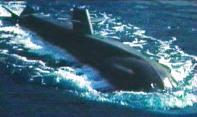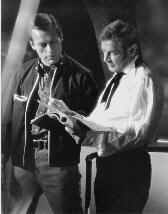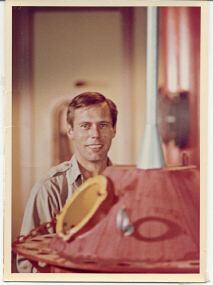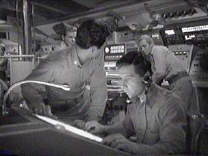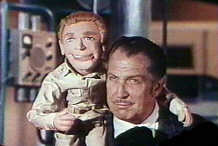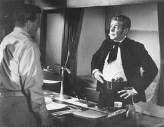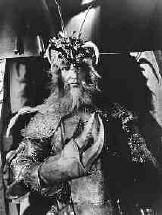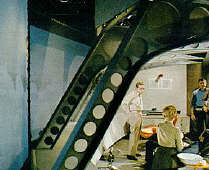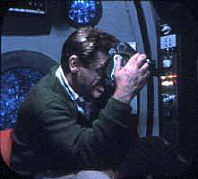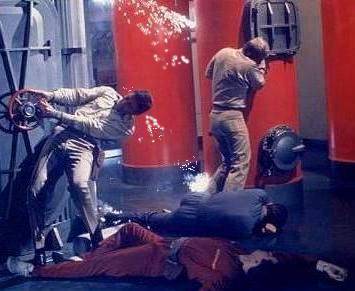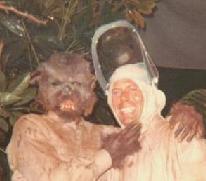|
Twentieth's
construction team built huge Plexiglas bubble assemblies, in essence big
aquariums, but just several inches front-to-back. "They were
huge," Didsbury points out, "and heavy,
especially when filled with water. There was one for each of the front
facing windows. While I do not know the measurements I will make the
following 'guesstimates!' They were on very heavy-duty rollers and the
actual water tank started just below what would be the windowsill of the
sub. The water tank, much like a huge aquarium extended above the top of
the windows and well past the left and right of the frames. They were only
about 6 to 8 inches front-to-back, and across the bottom of the tank were
air jets to create the bubble effect. I think these were devised to save
money as they were cheaper and faster to use than the old back screen
projection. With plenty of bubbles and the right lighting one could not
see through them. They were noisy and I would GUESS that the actors had at
least occasionally to go to post production and re-record their lines if
the bubbles made too much noise. "
For the regular
viewer, cutting between the bubbler windows and rear-screen footage,
with their very different textures, could be jarring. Of course, in
reality, there would be no bubbles, but Irwin liked the movement and the
look of them. And the bubble assemblies were cheaper and
quicker.
|
